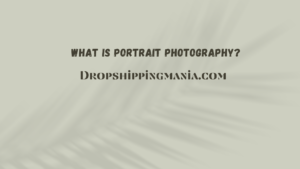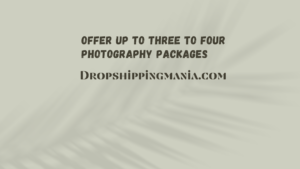What is Portrait Photography?
Portrait Photography is one of most common forms of photography. Portrait photography, also referred to as portraiture, is a type of photography in which the subject is one or more people and the aim is to convey something about the subject’s identity, personality, or story. Today, portrait photography has taken the place of this tradition. Portrait photographers as tasked with the ambitious goal of capturing the identity of a subject in a single image. If you’re interested in the world of photography, you’ve probably already heard about portrait photography. But if you haven’t, then don’t worry; this article will help clear up everything you need to know about this genre of photography. Here is the simple example of a portrait photo.

Portrait
It is usually created with the strategic use of lighting and backdrops, and an important component of portrait photography is understanding how to pose a subject while helping them look natural and comfortable. It’s a style of photography that is often commissioned to commemorate milestones or special events, to help individuals market themselves in an increasingly digital world, or even just to create a memory of a certain point in one’s life. On the commercial side of things, portrait photography is used by companies and brands to add a human face to their business.
It’s also frequently commissioned for storytelling purposes, whether it’s a celebrity portrait accompanying an article about them, a portrait of someone being featured in a news story, or a portrait used in an ad to convey a feeling that a brand wants to associate with themselves. There is a huge range of possibilities within this type of photography. Portraits can range in style from clean, professional, and practical to highly stylized and dramatic. Moreover it all depends on the goals of the photographer and the person or brand commissioning the photograph.

What is Portrait Photography?
Portrait Photography types?
Photographers that specialize in portraiture aim to capture subjects’ individuality and character. However, a portrait isn’t only a picture of a happy face. Different styles of portraiture can be broken down into numerous subgenres. Portrait photography and its different types have one focus: capturing people and their being. However, this style of photography is more than just creating an image of someone. It is also a versatile photography niche that enables an artistic representation through the use of light, setting, backdrops, poses, and others. Moreover knowing how to capture your subjects is crucial to achieving professional and high-quality results. Being aware of different types of portrait photography can help you craft your own portraiture style.
Discover below a list of 10 different types of portrait photography.
1) Couple, Family, and Group Portraits
2) Self-Portraits
3) Surreal Portraits
4) Conceptual Portrait Photography
5) Glamour and Boudoir Portrait Photography
6) Candid and Street Portraits
7) Environmental Portrait Photography
8) Fine Art Portrait Photography
9) Lifestyle Portrait Photography
10) Traditional Portrait Photography
Moreover, for more information you can visit this link.
https://expertphotography.com/types-of-portrait-photography/

Portrait Photography types?
Why portrait photography is important?
It’s priceless! We are leading very busy lives in a fast-paced world. Portrait photography allows us to slow down, stop, celebrate, and properly value a moment in time. I would compare it to watching your first born take their first steps, watching your daughter walk down the aisle, or watching your children bond as they play. These moments may be valuable, but they can so easily be missed. This experience allows you to stop and properly value the milestone or moment. Portrait photography may seem unnecessary on the surface, but these images are just as important as family photos. Instead of capturing a milestone, they capture the personality and essence of the person being photographed and can freeze a moment in time, creating memories you’ll cherish for years to come.
Portrait photography can be important for many reasons and those reasons may vary from individual to individual. A portrait photograph may be important for historic preservation, personal branding or for personal pleasure. There is no one reason why portrait photography is important. Just like any other form of art, it can be hard to explain why it is important. The reasons stated above may suffice in answering this question. Perhaps it is the connection a good portrait photograph can bring to the viewer that makes portrait photography an unexplainable need among the masses. The emotions and feelings that can be evoked through a good portrait photograph reside in each one of us and only when we see it through a good portrait can we connect with that feeling on a deeper level.
It provides you these feelings:
- Capture memories and emotions
- Hold on to what’s most important
- Tell your story
- Express yourself
- Deepen your connections
- Photos represent what’s important
- Photography teaches history through pictures
- Photography preserves special moments
- Photography encourages self-expression
- Photography inspires you to live more
- Photography helps you build connections
- Photography is essential for science
- Businesses use photography for marketing
- Photography doesn’t judge
- Photography can be your career
Moreover, for more information you can visit this link.
https://photofocus.com/photography/what-is-portrait-photography-the-importance-of-portraits/

Importance
Why do we need portrait photography?
We need portrait photography so portrait photographers can share their work with their audience and uncover a sense of connected emotion within them. The audience could be the photographer themselves enjoying portrait photography for their own hobby/pleasure or it could be the family of a client whose portraits you photographed. It is a balance between satisfying your personal self while also satisfying your client. A portrait photographer has a lot of power in deciding how they want their audience to feel when they view their portraits.

Why we need it?
Portrait photography packages?
A strong photo package will provide clients with clear options and a good sense of the value of your services. It will also compliment your online photography portfolio, and showcase your skills as a shooter.

Packages
Photo Packages: What Your Clients Want
The services you’ve already offered your clients should guide your decision on pricing. Make a list of the most common client requests you’ve received in the last year or two and include them in your photo packages. If you’re struggling, you can simply ask your clients to find out what your clients need in photography packages. Your clients have an idea of what they hope to get when they work with you.
You could look at the current market and pick up on current photography trends. For instance, wedding book printing is a standard procedure that many couples prefer or perhaps you recognize a trend where clients like one or two different backdrops for a maternity shoot. Nonetheless, putting the client’s wants first is the key to making attractive photo packages.

What Your Clients Want
Offer Up to Three to Four Photography Packages
Simplify your pricing by offering a three-tiered photography package: basic, in-between, and premium options. If you don’t find it possible to pick only three packages, pick four when variety is necessary. For example, due to the many possible services and options for wedding shoots, you may decide that including four photo packages is necessary. Helping your clients narrow their choices to three or four package types will ensure they aren’t overwhelmed and choose more quickly.

Offer Up to Three to Four Packages
How To Price Portrait Photography Packages
Portrait photography is always in demand, especially as people continue to share and post images of themselves online. When you create a portrait photography package, include different image sizes for prints and add-ons like additional photoshop or cropping. You can also provide hourly options, such as a six-hour shoot or an eight-hour shoot in a studio or on location. Base your hourly options on how much time, on average, it takes you to achieve good portrait shots. If you have an online portrait photography portfolio already, keep it up to date with your strongest work featured first. You can also promote your portrait portfolio by creating a blog on your website where you discuss your recent portrait projects as well as any trends you’ve noticed in the industry.
Moreover, for more information you can visit this link.
https://www.format.com/magazine/resources/photography/photography-packages

How To Price?
How many lumens portrait photography
The ideal lumen intensity for photography is over 1,000 lumens. A high lumen output that mimics natural daylight gives the best photography results. Moreover depending upon the area and the environment of photography will determine the quantity of lumens. According to a web source I have some data about a lumen.
Lumen: By definition there are 683 lumens per watt of radiant power at a wavelength of 555 nm
Luminous intensity: The number of lumens produced per unit solid angle (in a given direction) by a point source of light. One lumen per steradian is one candela.
Candela: Unit of luminous intensity; one lumen per steradian
Luminance: The number of candelas per unit surface area of an extended source. Moreover here, ‘surface area’ refers to the projected area of the true surface, along the viewing direction.
Moreover, for more information you can visit this link.
https://photography-on-the.net/forum/showthread.php?t=1491964

Lumens
How many watts for portrait photography?
You need around 200-300 watts for studio lighting for a small commercial photographic shoot. For larger studios and more subjects, strobes around 400-500 watts will do the job. However, the number of watts you require varies according to what you shoot and the setting. Studio flash output is measured in watts per second, or Joules (basically the same thing). A home studio or small commercial studio will manage with lights of around 200w/s. larger studios will mostly only need up to around 400w/s or 500w/s – you rarely need to go any higher. In fact, having too powerful a flash in too small a space will be counterproductive and probably flood the space with too much uncontrollable light. More powerful lights are also more expensive (as you probably expected), and may take longer to recycle.

Watts
Best lens for portrait photography?
Here I will give you a list of some best lens used for portrait photography.
- Nikon 50mm f/1.8G
- Canon EF 85mm f/1.4L IS USM
- Nikon AF-S 70-200mm f/2.8E FL ED VR
- Sigma 40mm f/1.4 DG HSM | Art
- Canon EF 50mm f/1.2L USM
- Nikon 105mm f/1.4E ED
- Sony FE 85mm f/1.4 GM
- Canon RF 28-70mm f/2L USM
- Nikon Z 85mm f/1.8 S
- Tamron 70-210mm f/4 Di VC USD
Moreover, for more information you can visit this link.
PHOTOGRAPHY

Best lens
If you want to gain more knowledge about articles like this you can visit our website.


